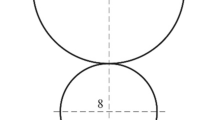Abstract
An optimization solution to roll shifting strategy for alternately rolling campaign is presented. All the strips in a rolling campaign are divided into narrow strips and wide ones, and shifting position of narrow strips is obtained by the recursive method, and then shifting position of wide strips is optimized by NSGA-II which is a multi-objective genetic algorithm. For wide strips, a multi-objective optimization model of roll shifting strategy is proposed, which takes 3 wear contour factors including edge smoothness, body smoothness and edge drop as optimization objectives. The Pareto optimal front of roll shifting strategy can be gained quickly by NSGA-II, which suggests a series of alternative solutions to roll shifting strategy. Analysis shows that the conflict exists among the 3 objectives. The final optimal solution is selected from the Pareto optimal solutions by the weighted-sum decision-making method. Industrial production proves the validity of the solution, and it can improve strip profile of alternately rolling, reduce strip edge wave, and extend the rolling miles of rolling campaigns.
Similar content being viewed by others
References
ZHANG Qing-dong, HE An-rui, HUANG Lun-wei, et al. Shape Control in Schedule Free Hot Strip Rolling [J], Iron and Steel, 2001, 36(2): 72 (in Chinese).
XU Ning, LIU Hong-yan, XU Zhi-rang. Investigation of Roll Shift Schedule for WRS Mill and Rolls Deflections [J]. Journal of Anhui Technology of University, 2006(4): 410 (in Chinese).
KONG Xiang-wei, XU Jian-zhong, WANG Guo-dong, et al. Study of Work Roll Shift Method on Hot Strip Mill [J]. Iron and Steel, 2002, 37(Supplement): 618 (in Chinese).
SHAO Jian, HE An-rui, YANG Quan. Varying Shifting Stroke Strategy of Work Rolls in Hot Rolling [J]. Journal of University of Science and Technology Beijing, 2011, 33(1): 93 (in Chinese).
LI Wei-gang, LIU Xiang-hua, YI Jian, et al. Optimization Model for Roll Shifting Strategy With Varying Stroke in Hot Strip Mill [J]. Iron and Steel, 2012, 47(3): 1 (in Chinese).
HU Guang-hao, MAO Zhi-zhong, HE Da-kuo. Multi-Objective Optimization for Leaching Process Using Improved Two-Stage Guide PSO Algorithm [J]. Journal of Central South University of Technology, 2011, 18(4): 1200 (in Chinese).
CHEN Y, Cartmell M P. Multi-Objective Optimization on Motorised Momentum Exchange Tether for Payload Orbital Transfer [C]//IEEE Congress on Evolutionary Computation. Piscataway: IEEE Computer Society, 2007: 987.
Srinivas N, Deb K. Multi-Objective Optimization Using Non-Dominated Sorting in Genetic Algorithms [J]. Evolutionary Computation, 1994, 2(3): 221.
Kalyanmoy Deb, Amrit Pratap, Sanier Agarwal. A Fast Multi-Objective Genetic Algorithms: NSGA-II [J]. IEEE Transaction on Evolutionary Computation, 2002, 6(2): 182.
Author information
Authors and Affiliations
Additional information
Foundation Item: Item Sponsored by National Natural Science Foundation of China (50974039)
Rights and permissions
About this article
Cite this article
Li, Wg., Guo, Zh., Yi, J. et al. Optimization of Roll Shifting Strategy of Alternately Rolling in Hot Strip Mill. J. Iron Steel Res. Int. 19, 37–42 (2012). https://doi.org/10.1016/S1006-706X(12)60097-1
Received:
Published:
Issue Date:
DOI: https://doi.org/10.1016/S1006-706X(12)60097-1




